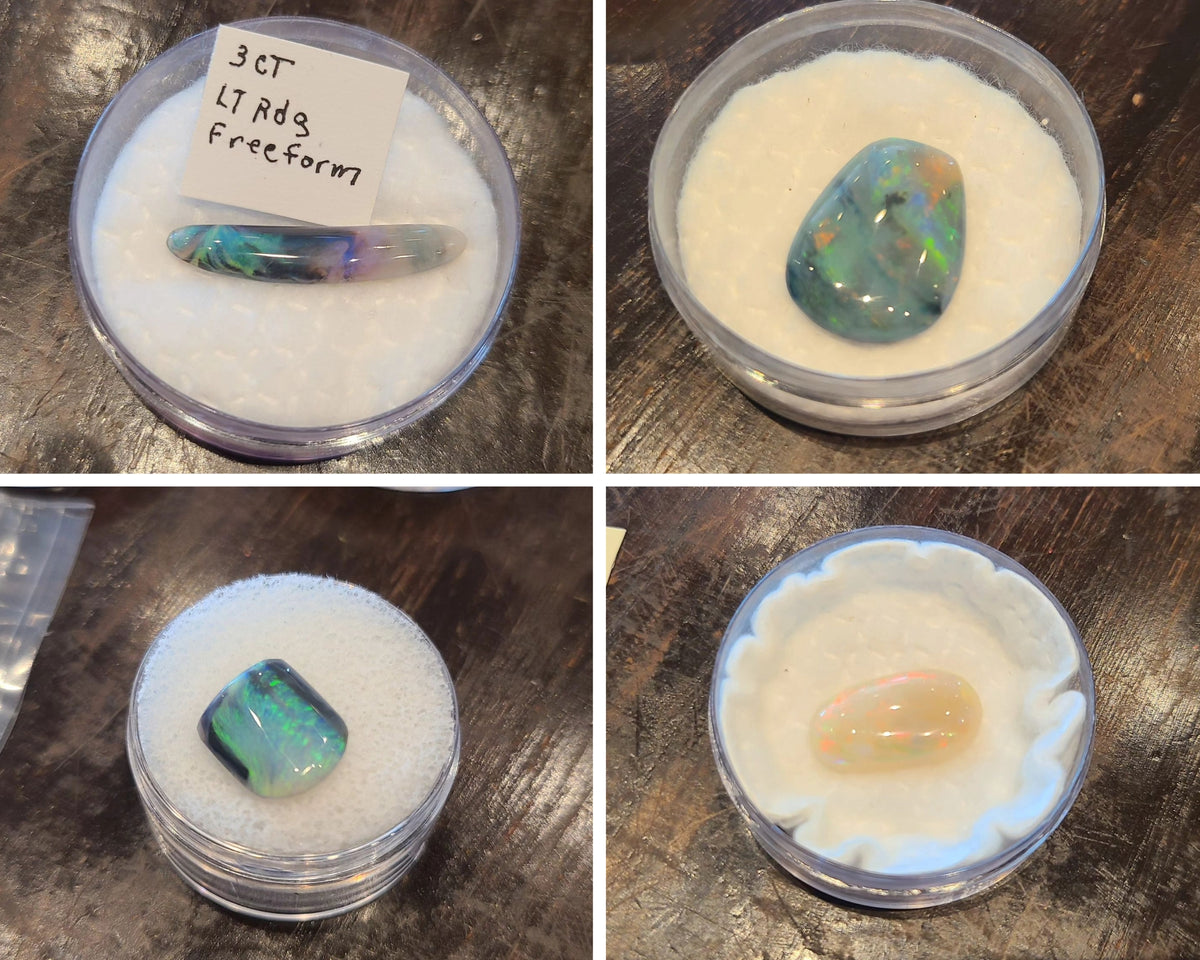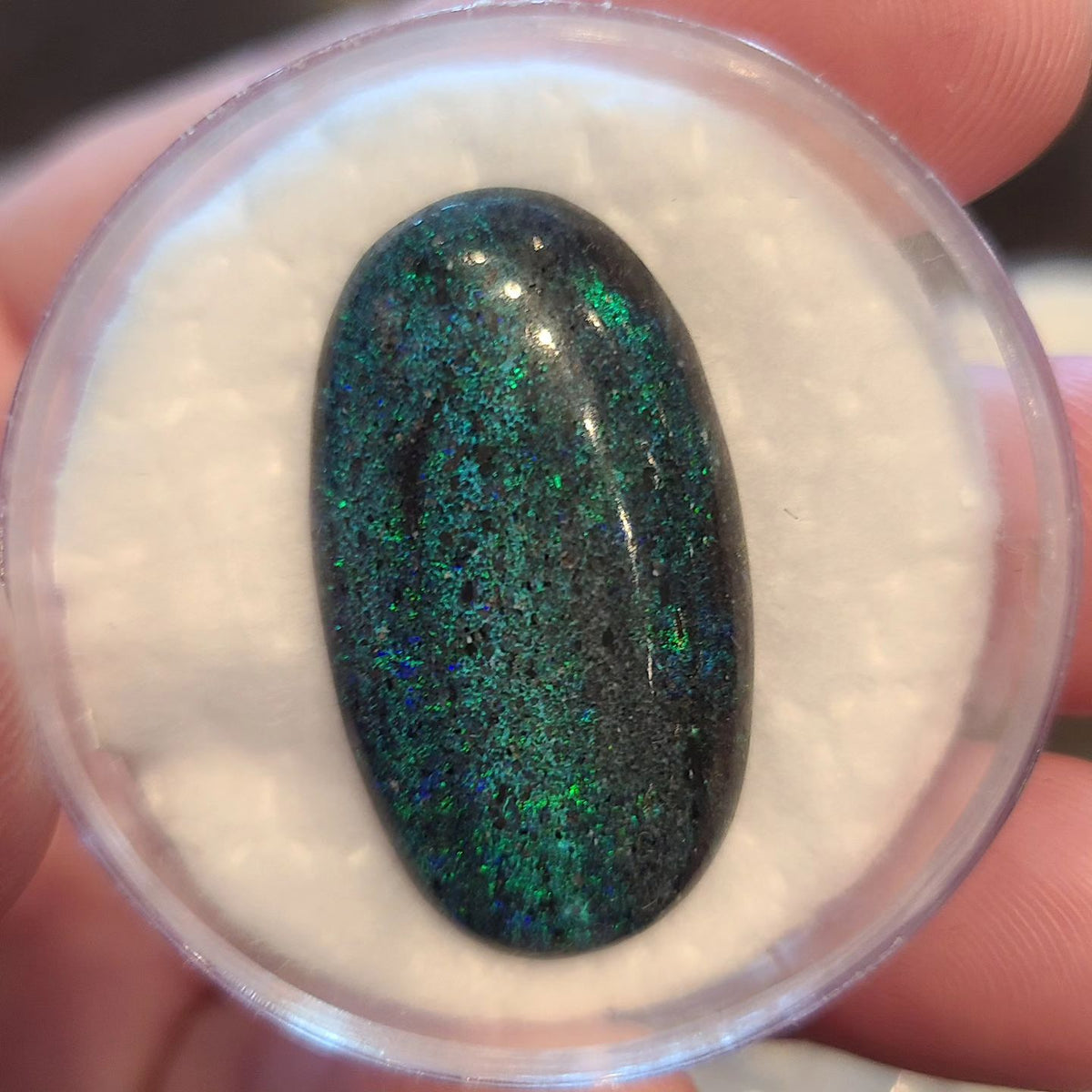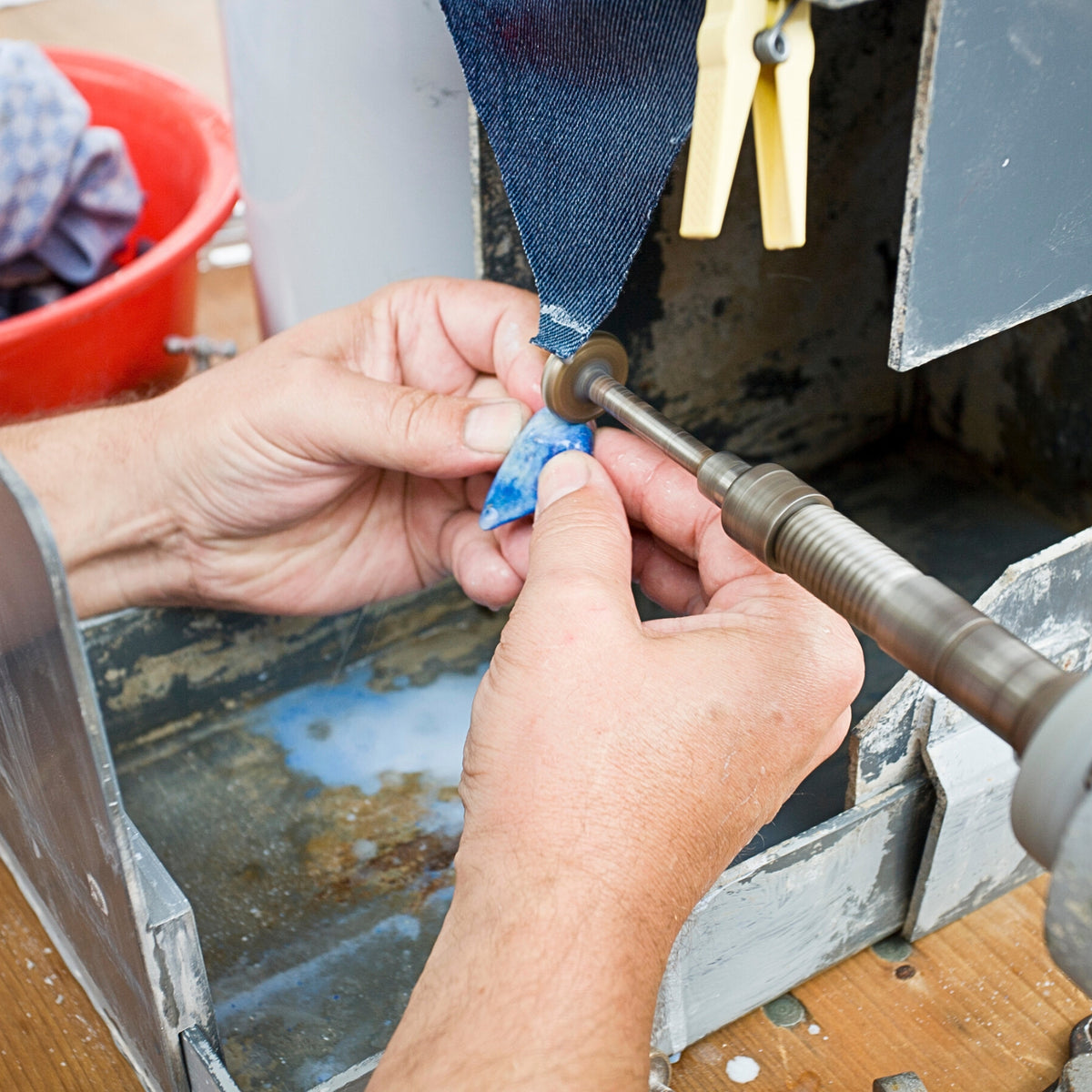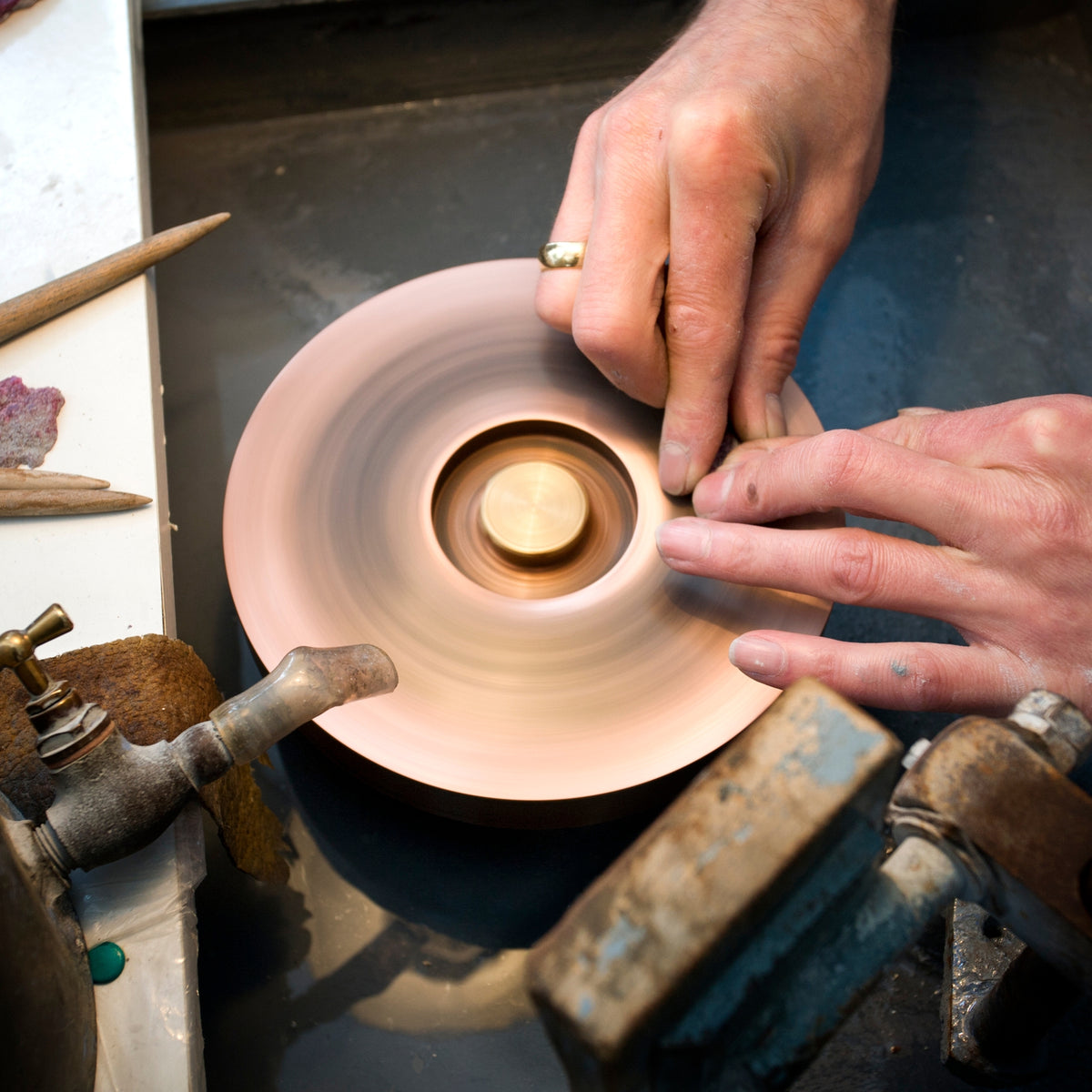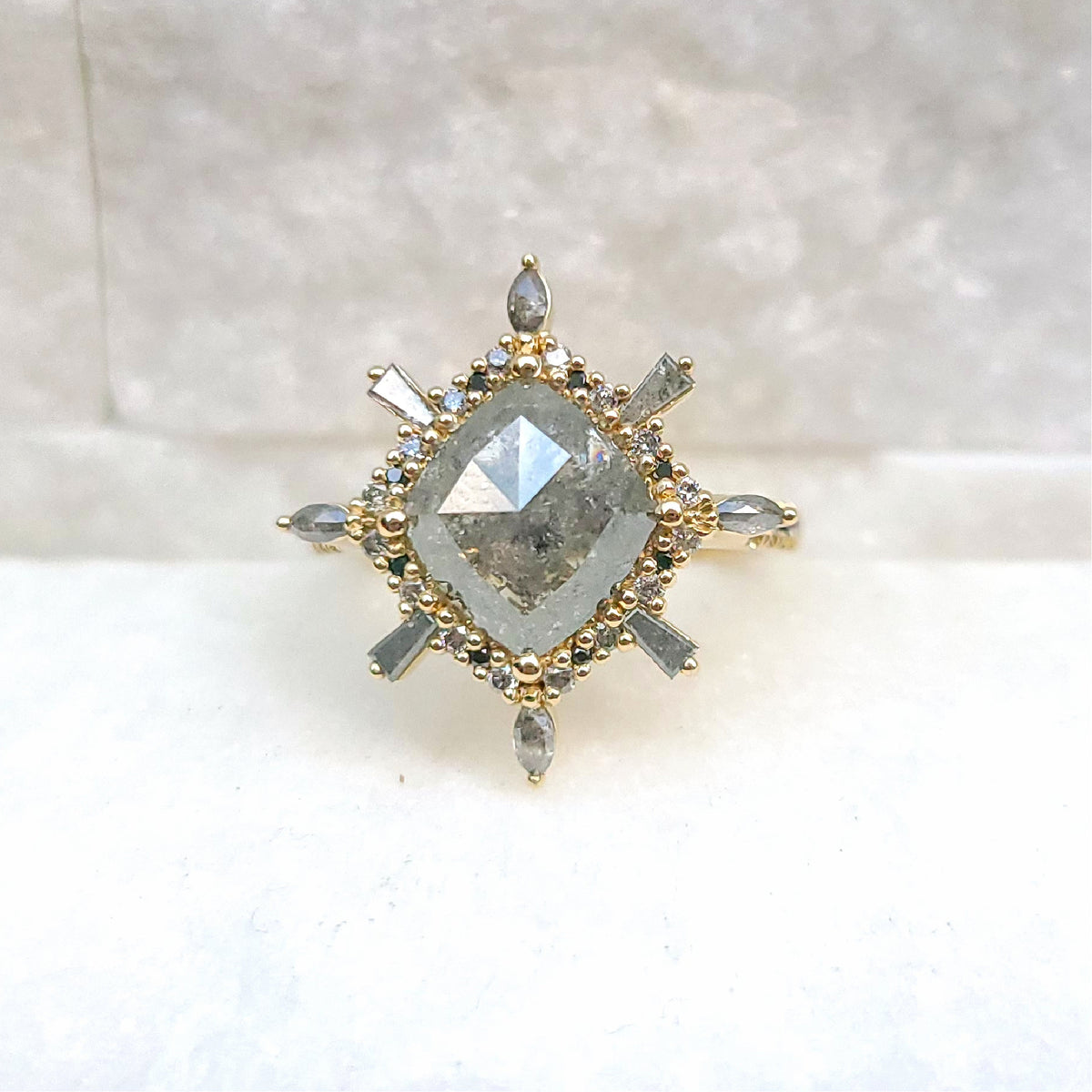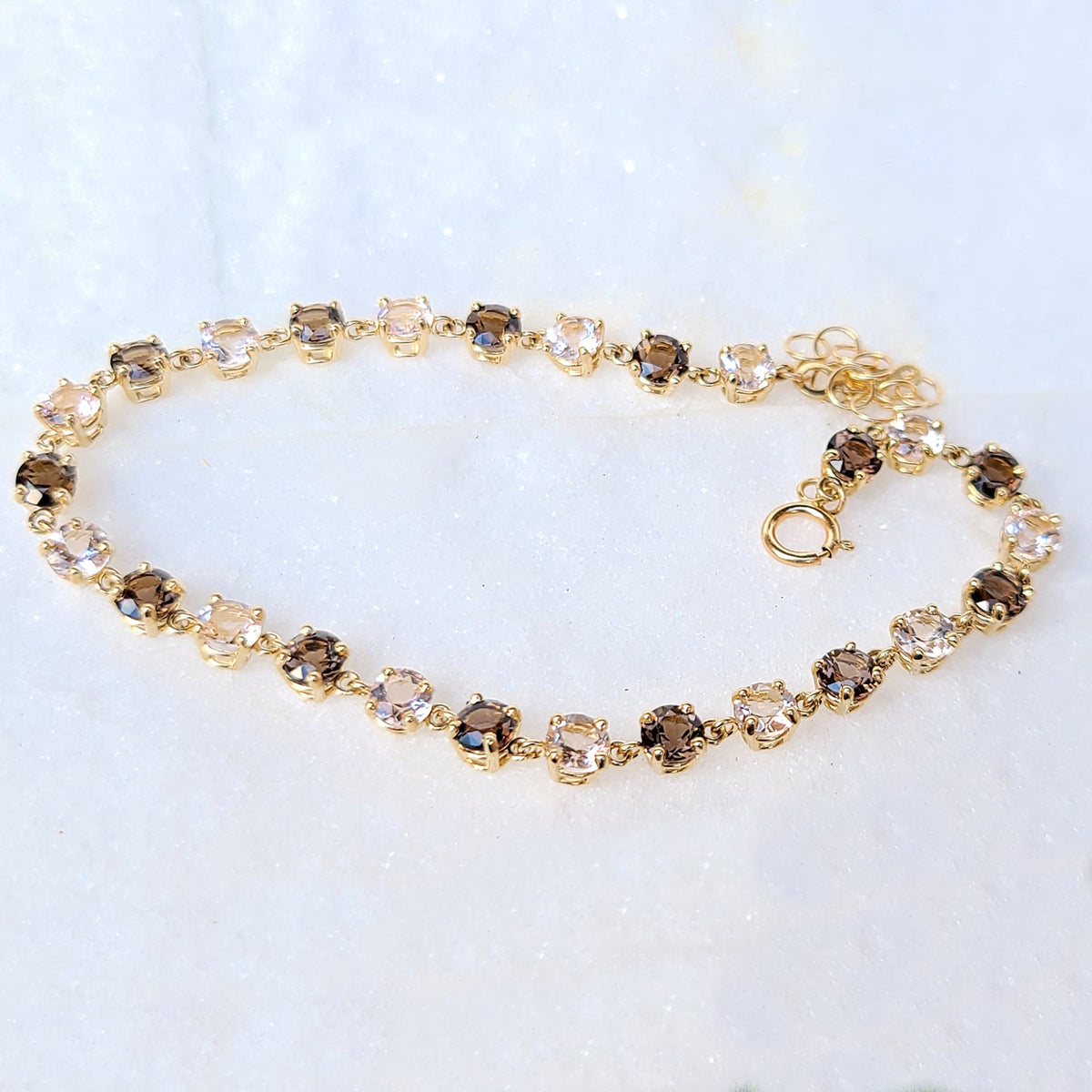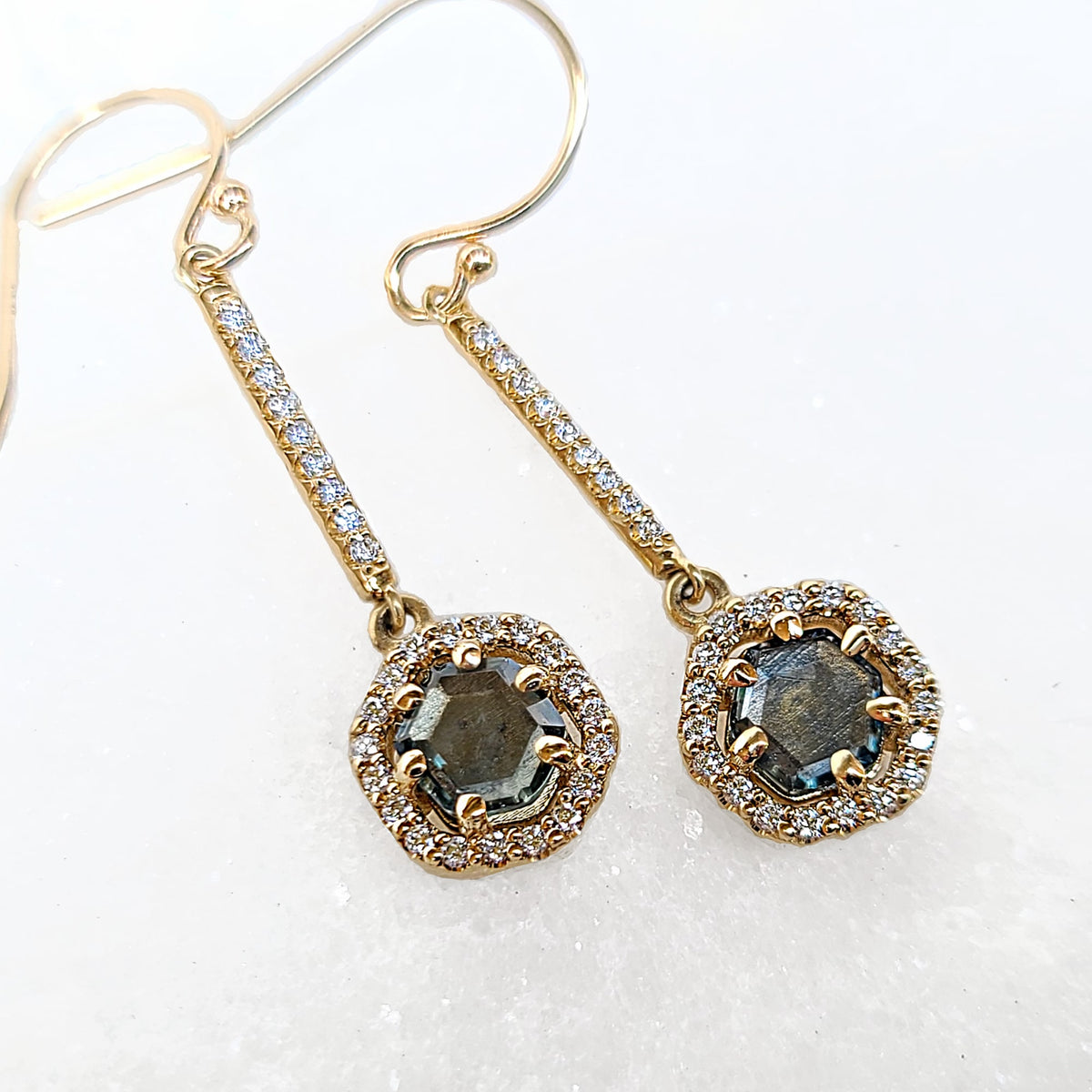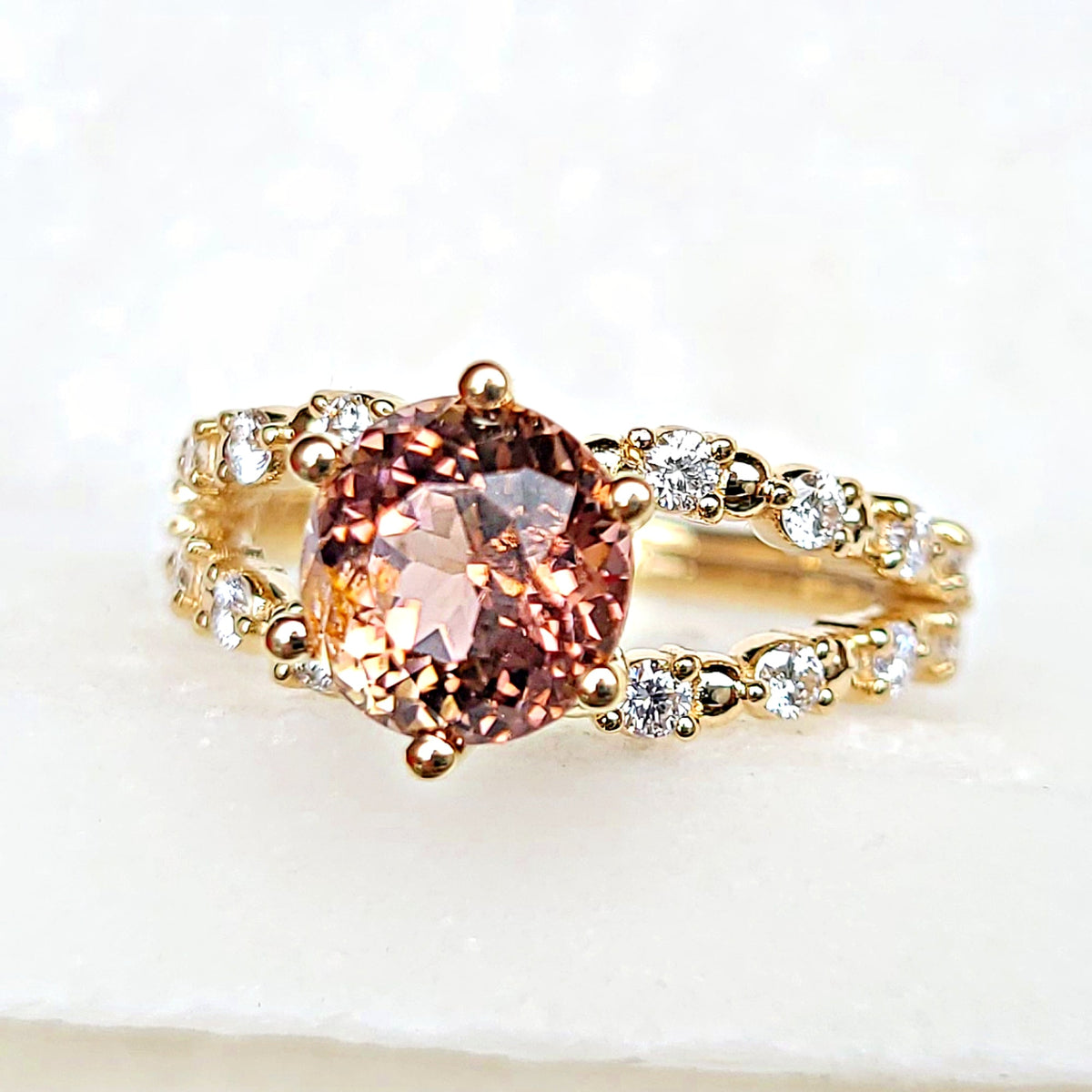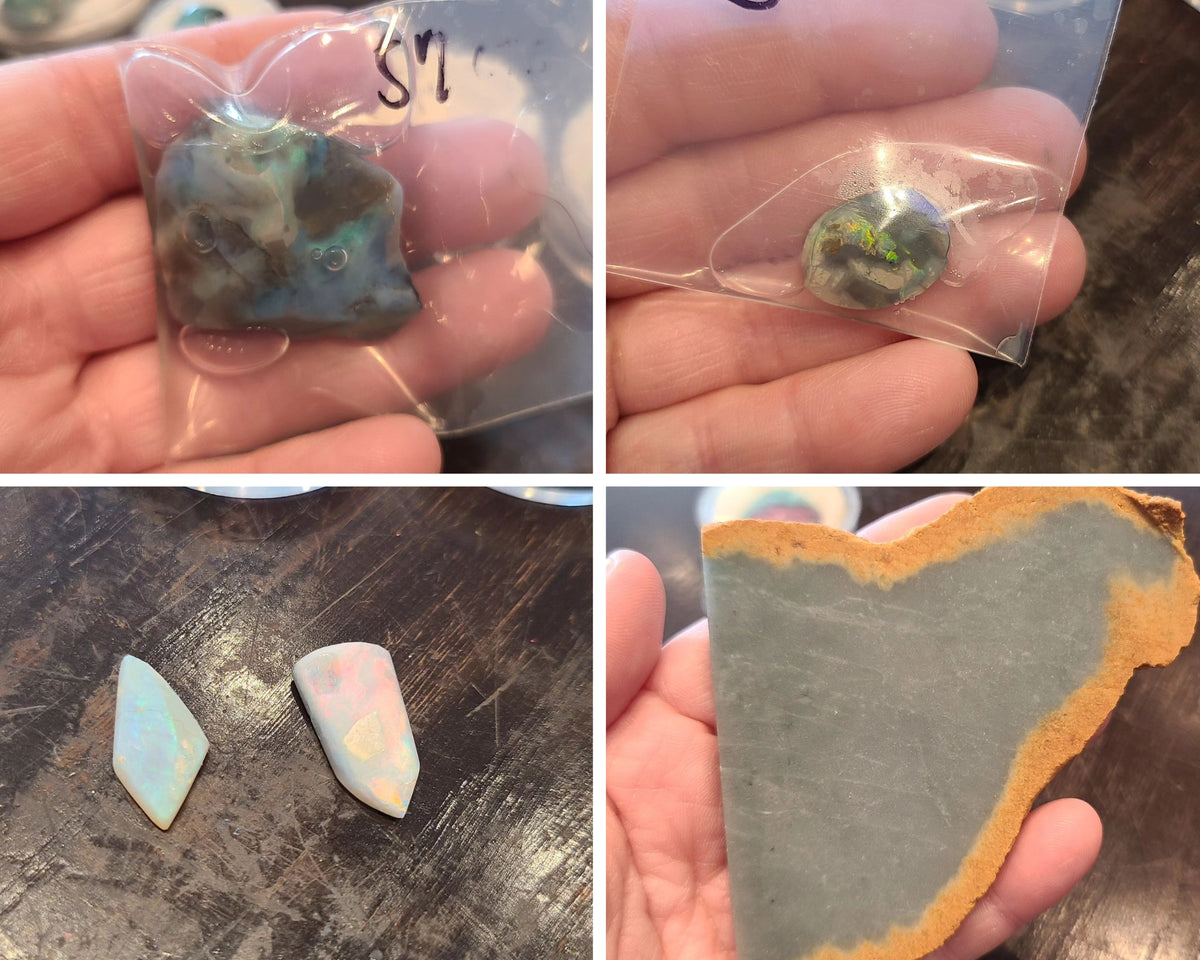
CRAFTING TO PERFECTION - MEETING A LAPIDARY
Greeings!
In early August, I had the wonderful fortune to meet a local lapidary. She found me after reading about me in the Philadelphia Business Journal. She has over 20 years of lapidary experience and a substantial stone collection. She has ties to the original owners of the mines. She exhibited her abilities on numerous stones for my viewing pleasure. They were both finished and rough. She named different types of stones that I had never heard of before. She provided me with the names of some GIA-certified stone cutters, one of whom had recently discovered a brand-new garnet variation!
When it comes to stones, at the moment, I'm particularly fascinated by opal. It's simply my personal preference, but I've never been a big fan of cabochons in gold jewelry. I tend to equate cabs with silver jewelry unless they are exceptional. Many people are aware that opal is a one-of-a-kind gemstone. I've always wanted to do some inlay pieces, and strangely, not too long ago.
Not only was I pleased with her work and intelligence, but she was also 71 years old and incredibly fashionable. She could have graduated from high school at the age of 16, but her father believed it was preferable for her to stay. She finished college at the age of 20. She used to be a teacher in Philadelphia, much like me, but she felt like everything was a never-ending fight (which I completely relate to). I look forward to working with her in the future.
The term "lapidary" comes from the Latin word "lapis," which means "stone," and refers to the ancient technique of cutting, sculpting, and polishing precious and semi-precious stones. It is a tedious craft that calls for talent, accuracy, and a sense of aesthetics. Lapidary artisans, commonly referred to as gem cutters, turn unpolished stones into stunning pieces of art by exposing their innate beauty and patterns.
Lapidary has a lengthy and fascinating past that dates back thousands of years. Lapidary was a process that was used in many ways by ancient civilizations including the Egyptians, Greeks, and Romans. Lapidary flourished in the Middle Ages as gemstones rose in value due to their aesthetic appeal and symbolic meaning. Through the Renaissance and into the modern age, the art form developed further, with new tools and methods opening up new opportunities for lapidary artists. Lapidary is still a treasured art form that blends tradition, skill, and creativity today.
The intrinsic beauty of gemstones is brought out to its fullest by a lapidary artisan. They are extremely knowledgeable about the many kinds of stones, their traits, and their capacity for change. They meticulously examine each stone using their experience to find the finest methods for shaping and cutting it in order to bring out its inherent beauty. They produce distinctive and alluring gemstones via their artistic talent, which are widely sought after by both collectors and jewelry designers as well as fans.
Gemstones are shaped and polished by lapidary craftsmen using a variety of tools and methods. The tools used change depending on the goal and how hard the stone is being worked. To produce precise cuts and a faultless finish, lapidary artisans use a combination of hand tools and machines, including saws, grinders, sanding discs, and polishing wheels. In order to get the best results and highlight the stone's natural beauty, each tool and process is carefully selected.
One has to have a thorough awareness of the many kinds of materials used in lapidary if they want to succeed in the field. Lapidary artists frequently work with gems including diamonds, rubies, sapphires, and emeralds. Lapidary, however, also includes the use of minerals, rocks, and even fossils. Each material has certain qualities and traits, thus the lapidary artist must modify their methods in accordance. Lapidary artisans can maximize each stone's potential by comprehending the makeup and structure.
Lapidary is an enthralling art form that reveals the artistry buried inside gems and other valuable materials. It is a centuries-old technique that combines talent, accuracy, and a great respect for natural beauty. Lapidary craftsmen bring out the brilliance and charm of gemstones, producing magnificent works of art from the choosing of the stone to the final polish.

